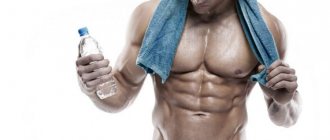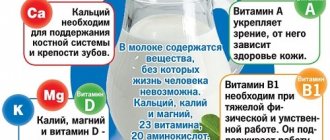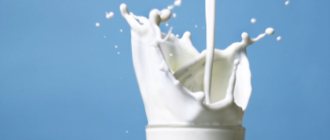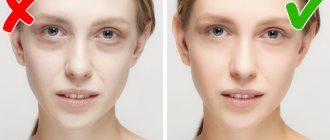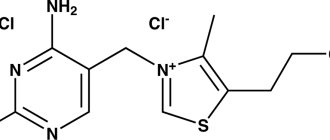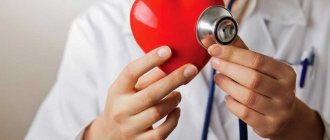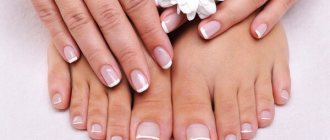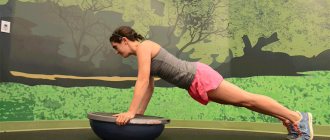It’s no longer a secret to anyone that you need to drink about two liters of water a day. But are you able to meet this daily requirement? Probably not. To make staying hydrated easier, Los Angeles-based celebrity nutritionist Kimberly Snyder, whose clients include Reese Witherspoon, Drew Barrymore and Kerry Washington, shared her recommendations. Read them below and head to the cooler for a glass of water.
“Everything in our body - from organ function to hormonal balance - depends on the amount of fluid. When water balance is normal, joints are lubricated, skin becomes smoother and more even, and hair grows healthier. Conversely, when the body is dehydrated, skin appears dull, ends become brittle, energy decreases, and metabolism slows, explains Kimberly Snyder.
Water in the human body.
Water-salt balance is a complex of interacting processes that involve water and salt. Everything is very clear: this is their entry into the body, absorption by tissues and organs, and excretion.
They say that every person is 50% water. In fact, its volume fluctuates depending on various factors, including age. Thus, an infant’s body is 77% filled with water, an adult man is 61% filled, and a woman is 54%. Why is the rate lower for representatives of the fair sex? It's all about the large number of fat cells with which the female body is strewn. As he ages, he loses even more water.
Warm water with lemon
A glass of water with the juice of half a lemon, without sugar or other additives, works real miracles for our health. It is recommended to drink it daily in the morning on an empty stomach. Why is it so useful?
- This natural remedy helps restore the natural pH balance of our body and fights high acidity.
- Normalizes digestion and promotes better absorption of nutrients.
- It is a natural diuretic.
- Strengthens our immune system.
- Allows you to cope with bad breath.
- Fills us with energy and is a rich source of vitamins.
Why is it important to maintain salt balance?
Under no circumstances should you overdo it with salt. It’s not for nothing that they say about it – “white death”, because this seasoning can contain sodium and potassium ferrocyanides that are dangerous to health, which are added to make the salt snow-white. I always carefully read the composition of physical and chemical indicators, and if I see the above names, I refuse to purchase.
If we ate a lot of salty foods during the day, then in the following days it is better to limit our salt intake as much as possible. If we drank a lot of water, then the amount of salt can be increased slightly, because it is washed out with the liquid. The daily dose of salt for a sedentary lifestyle is 10 grams. It should be taken into account that it is contained in ready-made products, for example, bread, spices, cheese. Therefore, you need to add just a little salt to your food - no more than five grams per day.
It is not possible to determine the norm with an active lifestyle: you should focus on your own taste, but at the same time remember that over-salting is fraught with disastrous consequences.
Cantaloupe (cantaloupe)
Water content – 90.15%
Cantaloupe is rich in vitamin C and fiber, making it a great summer food.
Like many other orange-colored fruits and vegetables, cantaloupe is also a source of beta-carotene, which the body converts into vitamin A. Cantaloupe has the following benefits:
- Prevents age-related retinal degeneration thanks to the antioxidant zeaxanthin
- reduced risk of asthma due to beta-carotene content
- lowers blood pressure due to potassium, vitamin C, fiber and choline content
- positive effect on digestion due to water and fiber content
- reduction of inflammation due to choline content
Water balance and its benefits.
I will repeat the rule everyone has heard regarding how many liters of water a person should drink: at least one and a half to two liters of water per day. Only in this case the water balance is maintained at the proper level. But! We must understand that we are talking about water in general, that is, not only that which we drink from bottles, but also that contained in the foods we eat. If we follow the norm, we do not feel thirsty. It occurs in cases where the diet contains food that is spoiled or full of harmful additives.
Another important rule: drink water not in glasses, but in sips. We take two sips and relax. Then two more and rest again, and so on. Drinking a glass at once is a serious stress for the body; the blood thins out instantly.
Many have observed the following characteristics: when they have eaten too much salty food, they crave sweets; if you eat something sweet, you are thirsty; quenched your thirst - you want salty food again. It turns out to be a vicious circle. But there is a reasonable explanation for it: drinking water dissolves salt and sugar, and we want sweet after salty and vice versa, simply in order to get rid of the unpleasant sensations of overeating sugar or salt. The body has a hard time from such cycles, excuse the pun.
Honey drink
Do you know how beneficial it is to start your morning with a glass of water with honey (1 tbsp or 25 g)? Thanks to the honey drink, your well-being will improve. Within a few weeks you will notice the first results:
- sweet honey helps you cope with nervous tension and brings a feeling of satiety, which is very important if you want to lose weight;
- A honey drink will help soothe arthritis pain. As you know, honey is an excellent natural antibiotic, stimulates the cleansing of our body from toxins and strengthens the immune system;
- Regular consumption of this drink will relieve you of inflammatory processes, which cause a lot of trouble;
- Honey dissolved in water will fill you with energy and strength. In addition, the drink will help restore the pH balance of your body.
Where does the drunk water go?
Everything we drink is distributed to different tissues and organs. Two-thirds of the volume is intracellular fluid, another third is extracellular. Water in our body is retained by colloids or takes part in the process of decomposition of proteins, fats and carbohydrates.
The water entering the tissues is more saturated with potassium, magnesium and phosphate ions than that concentrated in the intercellular space and blood plasma. At the same time, there are fewer calcium, chlorine, sodium and bicarbonate ions in the tissues. This is explained by the thinness of the capillary wall for proteins.
If the water-salt balance is not disturbed, then the composition and volume of the incoming fluid will also be normal.
The most important properties of water
Scientific research proves that, in addition to dissolving and transporting necessary substances, water has many other functions. Ignoring the distinctive qualities of water in regulating various body functions has led to the disastrous errors that are so characteristic of modern medicine.
- Water provides the process of hydrolysis (the chemical interaction of a substance with water, in which a complex substance breaks down into two or more new substances) in all aspects of metabolism. This is why water helps a seed to grow and turn into a flower or tree - the power of water is used to continue life.
- The osmotic movement of water through the membrane is able to generate hydroelectric energy, which is converted and stored in energy reservoirs in the form of ATP and GTP - two of the most important battery cell systems, the chemical sources of energy in the body.
- Water forms a specific structure that is used as a binder in cellular architecture, which, like glue, holds together solid structures in the cell membrane. At high body temperatures, this substance reaches the hardness of “ice”.
- Substances produced by brain cells are carried through “waterways” to nerve endings for use in transmitting messages. Small "waterways" that run along nerves and transport substances are called microtubes
- Proteins and enzymes function more efficiently in solutions of reduced viscosity. This applies to all receptors in cell membranes. In solutions with a high degree of viscosity (in a state of dehydration), the effectiveness of proteins and enzymes is reduced. It follows that water itself regulates all functions of the body, including the activity of the dissolved substances that it carries.
Removing water from the body.
The role of the kidneys in the life of the body is extremely important. With the help of these organs, ion exchange occurs and unnecessary cations and anions are removed. The kidneys help maintain the required level of intercellular fluid and maintain its correct composition.
The two and a half liters of fluid that a person drinks every day (ideally) are subsequently eliminated by the following organs:
- kidneys – 1.5 liters;
- skin, lungs – 900 milliliters;
- intestines – 100 milliliters.
It turns out that maintaining the water-salt balance is the task of several organs acting in conjunction.
Causes of disruptions in water-salt balance?
The water-salt balance is disturbed if a lot of fluid accumulates in the body and it is poorly excreted. Liquid fills the intercellular space, overwhelms the cells, causing them to swell. It happens that the process does not bypass the cells of the nervous system, as a result of which they become excited and the person experiences convulsions.
The opposite situation is when fluid is removed from the body too quickly and in large quantities. As a result, the thickness of the blood increases, which can cause blood clots. A water shortage of 20% can lead to death.
Other tips
Most people can stay hydrated by drinking water and hydrating foods throughout the day.
In general, a person may need to increase their water intake in the following situations:
- workout and sweating
- being in a hot environment
- presence of certain health problems
- pregnancy or breastfeeding
In addition to drinking enough water, limiting the intake of salty foods, including chips and crackers, as well as canned meats and canned soups, can also reduce a person's risk of dehydration.
Many people think that sports drinks are a good alternative to water. They contain electrolytes, including sodium and potassium, which may be helpful during vigorous exercise or prolonged exposure to heat. However, in most cases, plain water is the best choice for keeping your body hydrated because it does not contain sugar, sweeteners or other additives.
WHO (World Health Organization) recommends limiting the consumption of sports drinks by children, as they can lead to excess calories entering the body, weight gain, and tooth decay.
Symptoms: Dry skin, blue lips, swelling, brittle hair.
Disruptions in the water-salt balance are very noticeable by a person: weight decreases, the skin becomes dry, as well as the cornea. A serious lack of moisture turns fatty tissue into “dough”: this is exactly what its consistency becomes. Blood circulation slows down, protein metabolism is disrupted, blood pressure drops, and the pulse rhythm is disrupted (it can either speed up or slow down). Outwardly, this is manifested by sunken eyes, a pointed nose, and blue lips and nails. We feel cold in the upper and lower extremities and cannot warm up for a long time.
Disturbances in the water-salt balance are manifested by diluted stools, thirst, nausea and vomiting, and the appearance of severe edema. Hair becomes brittle, falls out, and the skin turns yellow. If at least some of these signs are observed, you should urgently consult a doctor, since an imbalance of water and salts in the body can cause cardiac arrest.
A calcium deficiency can lead to convulsive spasms of the larynx, and its excess can lead to thirst, vomiting, stomach pain, and frequent urge to urinate.
If there is little potassium in the body, the acid-base balance is disturbed, muscle tone decreases, chronic renal failure and intestinal obstruction develop, and the heart and brain suffer. Excess potassium causes vomiting, can lead to paralysis, and threatens to stop the atria. You can read a separate article by Doctor of Biological Sciences Galina Nikolaevna Grossmann about healthy and varied nutrition for weight loss, on which tens of thousands of people have already lost from 8 to 15 kg per month HERE
Due to poor kidney function and excessive use of antacid medications, large amounts of magnesium accumulate, which can be manifested by the following symptoms: slow heart rate, nausea and vomiting, and fever.
As for sodium, its deficiency or oversaturation can be true and relative. True deficiency is a consequence of intestinal obstruction, severe sweating, and salt deficiency. It can also be caused by burns. Relative deficiency develops due to oversaturation of the body with aqueous solutions, when a lot of them come in and the kidneys do not have time to excrete them in the required quantity. Consumption of table salt in large quantities can cause the formation of a true excess of sodium. The problem also arises if the kidneys cannot cope with the elimination of this substance. We can talk about a relative excess if the body is dehydrated.
Water with baking soda
Another simple home remedy that will help improve your health is 2 grams of baking soda and a little lemon juice, dissolved in 1 glass of water (200 ml.). It is recommended to drink it 3 times a week.
- This is one of the most effective ways to neutralize our body's pH.
- Drinking this drink is believed to reduce the risk of certain types of tumors. Although there is no scientific evidence to prove the validity of this hypothesis, one can hardly deny the benefits for our health of such a simple and affordable remedy as baking soda. Therefore, it is recommended to consume this drink on a regular basis.
- This remedy improves kidney function, making our blood better cleansed.
- Water with baking soda has a beneficial effect on our digestion.
How to restore water-salt balance with the help of medications?
It is quite difficult to identify an imbalance based only on symptoms, so their occurrence must be immediately reported to a specialist who will conduct an examination. Restoring the body’s water balance, as well as the salt balance, can be achieved by various methods of treatment: with the help of medications, taking chemical solutions at home or on an outpatient basis. Let's take a closer look at each method:
- Drug treatment. It involves the patient taking special vitamin and mineral complexes rich in various beneficial substances - sodium, magnesium, calcium, potassium, silicon and others. These are precisely the elements that maintain water-salt balance.
- Chemical treatment. It involves taking a salt solution. Ready-made packages are sold in pharmacies, but the solutions have a number of contraindications (diabetes mellitus, liver disease, kidney failure, etc.), so using them without a doctor’s prescription is strictly prohibited. Previously, such solutions were prescribed to patients who experienced dehydration as a result of severe diarrhea, vomiting, and dysentery.
- Ambulatory treatment. In some cases, restoring the salt balance in the body is impossible at home. The patient is placed in a medical facility and prescribed the necessary medications and solutions, which he takes under medical supervision. In the hospital, the patient is prescribed a certain drinking regimen, which cannot be violated. The same goes for food: it is prepared taking into account the condition and needs of the patient. In the most extreme cases, they resort to droppers with an isotonic solution.
Dehydration of the body
It is not difficult to guess that dehydration is dehydration that can occur as a result of non-compliance with the drinking regime described above. We are accustomed to the fact that dehydration is the result of diarrhea, vomiting or lack of moisture, however, it can also occur with intense fluid loss in the form of sweating. The category of people whose sweating process is significantly accelerated includes athletes, so their risk of dehydration increases.
Symptoms of dehydration include a strong feeling of thirst, dry mouth, dry skin, decreased urine output, cessation of tear production, dizziness, drowsiness, slow reactions, headache and even constipation. In some cases, dehydration may be accompanied by a rapid heartbeat, irritability, rapid breathing, and fever. If you notice any of the symptoms of dehydration, take appropriate action immediately and replenish fluid reserves as quickly as possible.
The situation with an imbalance of water and salts can be corrected not only with medications, but also with the help of diet.
The basic rule of this diet is to adhere to the daily salt intake of 7 grams.
Other rules concern the nuances of cooking. So, it is better to replace table salt with sea salt, and if it is unavailable, with iodized table salt. It is worth abandoning the principle of “salting by eye”: to maintain exact proportions, there is a teaspoon, which contains 5 grams of salt (a tablespoon holds 7 grams).
You should drink water based on your body weight: per 1 kilogram of weight you should have 30 grams of water.
Lose weight easily, without willpower and with a varied diet. Galina Nikolaevna has already talked about losing weight without diets, without pills, without sports and without exhaustion in THIS article.
Not everything is water that we drink
Approximately 67% of our total body weight is water. If its content in the body decreases by just 2%, you will feel very tired. If it drops by 10%, serious health problems await you. A further decline could be fatal. However, people do not drink enough water and often do not even know about the recommended daily intake of water, and some do not drink regular water at all. Survey results clearly indicate that people need to be more educated about the benefits of hydrating themselves. The lack of such information is a serious concern, as even mild dehydration can cause serious problems.
Developed societies are characterized by serious but catastrophic mistakes. People believe that tea, coffee, alcohol and all kinds of drinks can replace the absolutely natural needs of the body, which is exposed to daily stress. Of course, the above drinks contain water, but they also contain dehydrating substances that free the body not only from the water in which they are dissolved, but also from the water that constitutes the body’s reserve!
Modern lifestyle makes people dependent on all kinds of artificial drinks. Children are not accustomed to drinking ordinary water; they get used to sparkling water and juices. But it is impossible to satisfy the body’s water needs with artificial drinks. However, a cultivated preference for carbonated drinks automatically reduces the natural need for water when drinks are not available.
Doctors have absolutely no idea how important the role of water is in the body. Because dehydration leads to the loss of certain functions, the various complex signals produced by water management programs during periods of prolonged water shortage have been interpreted as indicators of unknown diseases. This is one of the most common mistakes in modern clinical medicine.
Elimination of malfunctions in the water-salt balance using traditional methods.
Traditional methods are quite accessible and do not require significant investment or effort. I suggest paying attention to several effective recipes that will help quickly eliminate deficiency or excess of water and salts in the body:
- Cut a couple of bananas, 400 grams of strawberries or watermelon pulp into pieces, put them in a blender container. Add lemon juice (half a citrus), 5 grams of salt and a glass of ice. Mix in a blender. The cocktail helps to compensate for the lack of electrolytes.
- A recipe for an emergency when you need quick help. Pour sugar (1 tablespoon) and salt (1 teaspoon) into cooled boiled water (1 liter). Stir thoroughly and take 1-2 tablespoons every 15-20 minutes. The daily norm is a maximum of 200 milliliters.
- Pour about 20 grams of dry St. John's wort with half a liter of alcohol. Let it sit for 20 days, after which we pass it through cheesecloth and take 30 drops diluted in water three times a day.
Fruit lovers are well aware of which foods remove water from the body. Grapefruits and oranges do an excellent job with this, and even better – their freshly squeezed juices. I also recommend drinking homemade compote made from dried fruits more often, and, of course, green tea. The main method that Doctor of Biological Sciences Galina Nikolaevna Grossmann uses to calm herself while losing weight and relieving food addictions is bioenergetic sessions. For example, you can receive and experience the effects of her session “Liberation from sweet addiction” HERE
The above methods of restoring the water-salt balance, as a rule, are a great help in coping with the problem. Still, it is better not to bring yourself to a state of dehydration or swelling. Following a diet, reasonable fluid intake, a healthy lifestyle, and annual examinations are good preventive measures that each of us should take. If a failure in the water-salt balance does occur, in no case should you let the problem take its course and self-medicate. The only right decision in such a situation is to get tested and consult with a specialist about troubleshooting. Properly selected treatment will help you get in shape and feel the taste of life again! Losing weight Galina Nikolaevna can easily lose all existing excess weight in monthly health-improving weight loss courses. At a rate of 8 - 15 kg per month. Forever. For a more detailed acquaintance with G.N. Grossmann’s weight loss system, receive a series of video lessons; simply enter your email in the form located immediately below this text.
GET FREE VIDEO LESSONS ON HEALTHY WEIGHT LOSS FROM DOCTOR OF BIOLOGICAL SCIENCES G.N. GROSSMANN. BASED ON MEDITATION AND DELICIOUS VARIOUS FOOD, WITHOUT DIETS OR OTHER EXHAUSTION.
Condition monitoring, prevention and exercises
Calculation of water balance in the body
Before you draw any conclusions about your condition or take steps to eliminate the problem, you will have to understand some details. The average person needs to drink approximately two liters of fluid per day. However, for everyone, this figure may differ slightly, depending on the individual characteristics of the body, physical activity, the amount of body fat and other factors. The calculation is usually made using a special formula.
V1 = (m x 40) + (k x 500)– a1(a2)
V2 = (14.5a m) + (kx 500) + d – 200
V` = V1 – V2
Where:
V1 is the body’s need for water in milliliters per day.
V2 is the required amount of water in milliliters that must be additionally administered per day.
V` - water balance for 24 hours.
m is body weight in kilograms.
k is the temperature coefficient. It is very simple to calculate, you need to take body temperature in degrees Celsius and subtract 37. This coefficient is considered zero at a temperature of 37°C and below;
k = 1 at 38°C.
k = 2 at temperatures 39°C and above.
a1 = 300 for adults.
a2 = 150 for children.
d - diuresis.
As a result, the final calculation implies that when V` = 0, then there is a zero balance, when V`> 0 it is positive, and when V`< 0 it is negative.
Prevention of water-salt metabolism disorders
Unfortunately, most people only drink water when they feel thirsty. This approach cannot be called correct. If you already want fluid, then there is a slight imbalance. To avoid serious problems, it is better to take care of your body in advance by taking preventive measures.
- Just make it a habit to drink water regularly. Do not think that juice, smoothie, soup, tea or coffee will help cope with the lack of fluid, not at all. After all, these are either drinks that have their own effects on your body, or food that itself requires water for processing.
- It’s good to train yourself to drink a glass of water in the morning, immediately after waking up.
- Pay attention to the amount of salt you eat per day. The body needs it, but its quantity must be strictly controlled.
- A sedentary or sedentary lifestyle causes not only physical inactivity, but also an imbalance in water-salt balance. That’s why you need to move as much as possible. If strength or cardio training in the gym is not suitable for some reason, you can simply walk more, do breathing practices, yoga, qigong gymnastics, sign up for dancing or Pilates.
- A proper sleep schedule is also good for maintaining balance. Go to bed no later than ten in the evening, and get up no later than seven in the morning. You will soon feel how much more alert and active you will become.
- Watch your diet, it should be as healthy and balanced as possible. Remember that a person eats in order to live, and not the other way around.
The emotional and mental state of a person plays an important role. It is best to try to avoid stressful situations. Of course, this is not always possible, but it’s still worth trying to be less nervous in any situation. In addition, it doesn’t hurt to enlist the support of family, loved ones, and friends.
Race walking and preventive exercises
Physical activity is important for any condition of the body. Even if now it seems to you that everything is in order, then tomorrow, if there is no movement, you may discover many unpleasant problems. Therefore, it is recommended to regularly perform a number of exercises, which will also help maintain normal water-salt balance. The first such means will be race walking. It is accessible to almost everyone, regardless of age or gender. It doesn’t require any additional equipment, and you don’t have to buy a gym membership.
Bird wings
Starting position – feet shoulder-width apart, back straight.
- Stand straight, bend your knees slightly, lower your arms along your body.
- As you inhale, raise your arms up to your sides.
- As you exhale, lower them back down.
It is recommended to repeat the movement three or four times at a very slow pace.
Throwing back the head
The starting position is the same as in the previous exercise.
- Place your hands on your belt, lower your head so that your chin is pressed tightly to your chest.
- As you inhale, lift your head and then tilt it back as far as possible.
- As you exhale, return to the original position.
You also need to repeat it three or four times smoothly, without stopping. At the same time, the pace should remain very slow.
Shoulder rotation
You can stand as before, with your knees slightly bent, but keep your back straight and look forward.
- Bend your elbows, bringing your hands closer to your shoulders. For convenience, your fingers can be placed on your shoulders.
- Make circular movements with your shoulders so that your shoulder blades also work, first clockwise and then counterclockwise.
The recommended number of repetitions is six to eight. So again, very slow, smooth. Breathing in this exercise is completely free.
